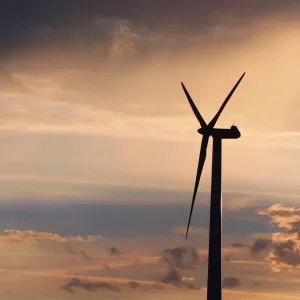Siemens has received an order from TenneT for an offshore wind farm grid connection in the North Sea. In a consortium with Petrofac, Siemens is to supply all the HVDC equipment for the 900 MW BorWin3 grid connection, scheduled for commercial operation in 2019. Siemens is the consortium leader, while Petrofac will be responsible for the construction and installation of the offshore platform.
The connection will employ HVDC Plus, Siemens’ VSC-MMC (voltage-sourced converter, modular-multilevel converter) technology. It provides black-start capability, an essential requirement for offshore networks, plus modularity, which reduces the complexity and size of installations, also a mandatory requirement for offshore platforms.
The 160 km long connection (130 km under sea and 30 km on land) will link several wind farms to the German mainland, via the Emden feed-in point. The 155 kV AC produced by the wind farms will be transformed into 320 kV DC on the BorWin3 offshore platform and converted back to AC at Emden.
Connection history
This is the fifth order that Siemens has received from TenneT for offshore wind farm connections in the North Sea, the others being HelWin1 (576 MW) and HelWin2 (690 MW) off Helgoland, BorWin2 (800 MW) off Borkum, and SylWin1 (864 MW) off Sylt. These grid connection projects are well advanced and are scheduled to enter operation in succession between 2014 and 2015.
Supply and laying of the cables was tendered separately by TenneT, and the €250 million contract for that was awarded to Prysmian Group. Prysmian will supply, install and commission a 320 kV DC extruded submarine and land power bipole connection with a rating of 900 MW, and associated fibre optic cable system, comprising a 29 km land route and a subsea route of 130 km.
Marine cable laying will be carried out by the newly upgraded Cable Enterprise DP 2 ship, which is specifically geared to handling offshore wind farm connections.
Cables will be installed through environmentally sensitive areas both by land and at sea, including a section along the Ems estuary. This is the second offshore wind grid connection project along this route awarded to Prysmian, the first being DolWin3, which was awarded last year, and the seventh in all, six of them DC with contained AC cable connections, and 1 AC-only project.
Prysmian is in fact providing complete cable systems for projects in all of the four clusters assigned to TenneT in the North Sea.
Scope
Siemens scope of supply includes all the HV equipment for the grid access system as well as the land side substation. In addition Siemens will supply two power transformers per station at a rating of about 670 MVA as well as all the air and gas insulated high-voltage switchgear equipment. The power transformers and converter modules are to be designed, manufactured and tested at the Siemens factory in Nuremberg. The technology applied here is well-proven and it is already successfully used in four other offshore projects.
The HVDC Plus design ensures a virtually ideal sinusoidal AC voltage and a smooth voltage in the direct current circuit. This renders the use of harmonic filters superfluous.
The platform will be designed as a parent platform, equipped with a helipad and crews’ quarters. Siemens will be supplying the HVDC technology for the platform and will be responsible for the construction of the complete HVDC converter station on land.







